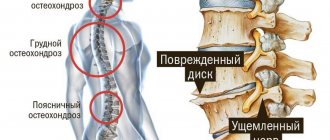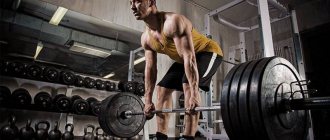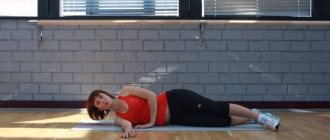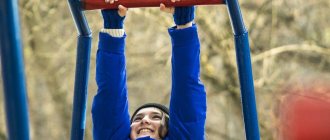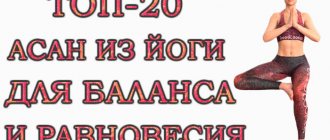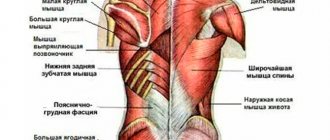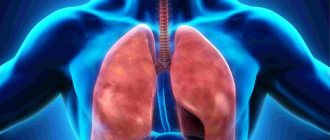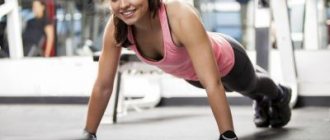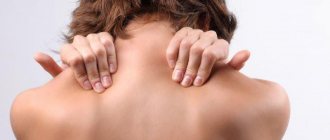An open chest and straightened shoulders are not only a beautiful appearance, but also an opportunity to breathe deeper, succumb less to respiratory diseases and generally feel more cheerful and confident, because as a result of a psychosomatic connection, our usual postures directly affect our sense of self and will help us This includes asanas such as matyasana and ustrasana.
- Positive effect of a complex of yoga asanas and contraindications
- Setting up for practice
- Video: Kapalbhati (YouTube)
- Backbends in Sukhasana - benefits and technique
- Reverse Prayer Pose (Paschima Namaskarasana)
- Cow Head Pose (Gomukhasana)
- Video: Cow Head Pose
- Camel Pose (Ushtrasana) (photo)
- Video: Camel Pose
- Fish Pose - Matsyasana (Matsyasana)
- Child's Pose (Balasana)
Positive effect of a complex of yoga asanas and contraindications
Let's outline the reasons why additional impact on the thoracic region may be required. And the reasons can be very different: sharp or dull pain in the thoracic region (no matter, front or back), aching or pulling sensation, difficulty breathing, inability to fully bend back or forward.
All this can happen due to a number of violations:
- scoliosis;
- neuralgic disorders / VSD;
- enslavement due to low activity;
- excessive physical activity;
- slouch.
As you understand, before starting classes you need to consult a doctor so that he can establish the correct diagnosis. In this case, it will be possible to select a suitable complex to solve the problem.
But sometimes it happens that there seem to be no physiological problems, but there are symptoms. The reason may be psychosomatic:
- isolation, holding back emotions;
- depression;
- severe stress;
- guilt.
In this case, yoga can also help, since it also works with psychosomatic phenomena.
In addition, all pranayamas and poses of the complex affect the internal organs: massage and normalize the functioning of the intestines and stomach, expand the diaphragm (to a greater extent if practiced at a young age), improve the condition and function of the kidneys, and also help improve metabolic processes due to the normalization of liver function .
However, this complex has some contraindications:
- You should postpone classes if you have high or low blood pressure;
- Do not exercise if you have a headache, nausea, dizziness or weakness;
- During pregnancy, some positions are excluded in the later stages.
If you have problems with the spine, it is important to select an individual complex and exercise under the supervision of an instructor.
Some asanas may have a strong impact on the knee and hip joints. In this case, you can use blocks or rolled blankets, or perform other poses with a similar effect.
Psychosomatics. Opening of the chest and armpits
Hatha yoga asanas have an unconditional impact on our physical body. Experienced practitioners already have a good idea of what area of the body they work in each asana, what muscles are involved in it, what ligaments are stretched, the blood circulation of which internal organs is enhanced, etc. However, there is no doubt that both the energetic (pranic) and mental body of a person feel a strong impact when practicing asanas, and groups of asanas similar in physical effect (bending, bending, twisting, etc.) have a special, characteristic effect on the energetic and mental body, and we can feel it on the physical plane.
In this work I want to highlight the topic of opening the chest and armpits during the performance of asanas (bending and not only) and consider the effects that this has on our energetic and mental body.
The human chakra (energy) system is represented by 7 main and many additional chakras (energy zones or circles). In the Indian philosophical system, there are traditionally 3 main lower chakras (Muladhara, Svadhistana, Manipura) and 4 upper chakras (Anahata, Vishuddha, Ajna (Trikuta) and Sahasrara), located along the central energy channel (Sushumna) running along the spine. Chakras are a kind of antennas that receive and transmit their inherent energies.
Additional chakras that may be of particular interest to hatha yoga practitioners are those found on the soles of the feet (Pada chakras), on the palms of the hands (Hasta chakras), and in the armpits (Kaksa chakras). All these chakras are paired.
Kaksa chakras are complements to the Anahata chakra, its unique assistants, purifying the energies passing through Anahata. Thus, the full opening of the Anahata chakra is impossible without the participation of the axillary chakras. In asanas that work the heart chakra, the armpit area is almost always involved, but its stimulation is possible without active opening of the chest and Anahata.
Asanas that open the chest increase the amount of energy in the Anahata chakra, stabilize it, at the mental level this is expressed in increased self-confidence, which leads to openness to the world, new people, new ideas and projects, readiness to step into the unknown (we lean back, to an area that we cannot see). Additional opening of the armpit area clears emotions, reduces the manifestations of depressive states - melancholy, anxiety, apathy. At the global level, working on the Anahata zone and axillary zones increases the ability to give love, positive emotions, and bring light and goodness to the world.
The simplest backbend is the Vajrasana variation with the palms gripping the toes. In this asana, the shoulder joints are gently opened, Anahata is activated, and the armpit area is not involved. The asana helps you enter a state of acceptance and compassion. A slight bend from a standing position with palms on the sacrum - Anuvittanasana - already opens up the armpit area. The asana has a powerful effect on the heart center, gives self-confidence, gives joy and vigor by opening and cleansing the armpit chakras.
Deeper deflections - Ushtrasana and Dhanurasana - open up from the inside out, contribute to powerful energy production, help overcome fears of the unknown, open up to new things, relieve melancholy and sadness. A person moves from an introvert to an extrovert.
Many poses, while not being backbends, nevertheless open up the core and axillary zone well. These are, for example, Adho Mukha Svanasana in a variation with a raised head, Sishumarasana (Dolphin Pose), Gomukhasana. In these asanas, Anahata is gently stimulated and cleansed; good opening of the axillary zone helps to work through negative emotions and get rid of them. Also, Anahata and the armpit area are well revealed in asanas such as Utthita and Parivritta Trikonasana, Parivrita Uttanasana, Ardha Chandrasana, Vasishthasana, Virabhadrasana I and II.
To summarize, it should be noted that all these asanas stimulate the sympathetic nervous system and have a stimulating effect (of varying strength) on the energy and mental body, so they should be practiced in the morning or in the first half of the day, and the evening should be left for calming, grounding, relaxing practices.
Performed by Marina Gukovskaya, a yoga teacher course student.
Setting up for practice
Like any complex, we start this one with preparation for practice. You should take a comfortable position. Traditionally, we sit in a simple cross-legged pose (Sukhasana). We place our hands on our knees. It is important to straighten your spine, pull your shoulders back and push your chest up, but there should not be excessive tension in your back.
This pose is used in yoga for various breathing and meditation practices.
We close our eyes and draw our attention inside ourselves. It is important to note what is bothering you now: is there pain or some kind of tension in the chest area; how breathing is carried out: is it difficult, is it accompanied by any painful or unpleasant sensations. Next we will compare these impressions with the state after the lesson.
Now we try to clear the mind of all thoughts - negative and positive, leaving all stress and feelings outside the mind, outside the room. There should be a pleasant silence and emptiness in your head. We focus on breathing. We take several deep exhalations and inhalations and move on to kapalabhati breathing.
A breathing exercise called kapalabhati is very common in various schools of yoga and is known for its positive results.
- The brain is saturated with oxygen, blood circulation increases, which helps improve mental activity.
- The respiratory system is worked out and trained. If you are specifically experiencing breathing problems, this may help. And in this case, you should resort to this pranayama outside of practice regularly.
- Psychological symptoms such as anxiety, increased emotional reaction, and fear are relieved. As a result of this, you will be able to calm down. If your problem is psychosomatic, you will feel significant relief with regular exercise.
This exercise is quite simple, but may require some practice.
- We sit with a straight back, keeping the body motionless.
- Inhalation and exhalation are carried out using the abdomen; the work of the chest should be excluded.
- We first exhale, drawing in the abdominal muscles. That is, exhalation occurs automatically when we forcefully pull our stomach inward.
- Next, we immediately relax the muscles, due to which we inhale.
- This is all done quite quickly. To begin with, you can do 1 cycle per second. Inhalation and exhalation are carried out continuously one after another.
- It is important to maintain a rhythm. Experienced practitioners can do kapalabhati at a faster pace.
- At the initial stage, you can put your hand on your stomach, this will help you feel how the press works.
- You can perform pranayama in several approaches; 3 of 30–40 breathing cycles will be enough. Thus, we spend about 5 minutes on kapalabhati.
You can also watch a video with a visual demonstration of the practice.
Video: Kapalbhati (YouTube)
Curvature of the chest in childhood
Factors that provoke the occurrence of pathology are most often genetic disorders, as well as negative influences during the formation and development of cartilage and bone tissue of the breast. The pathology begins to progress very quickly as the child grows older, which is associated with the formation of his rib bones. Most often, children suffer from funnel-shaped curvature.
In infants, the curvature is barely noticeable. It becomes more pronounced as the child grows older. Gradually, the volume of the chest cavity decreases, which causes curvature of the spinal column and dysfunction of the chest organs. At about three years of age, the curvature is already very noticeable. When inhaling, the ribs recede, which can cause respiratory failure.
Children often get sick, they have vegetative disorders and retarded physical development. Also, obvious cosmetic flaws can cause psychological distress in a child.
Conscription into the army with chest deformation
The possibility of conscription is determined by those functional disorders that develop due to abnormalities in the structure of the chest.
Deformation of the chest
In the second and third degrees of curvature, cardiac dysfunction and breathing problems occur . A pulmonologist's opinion is required. The army is contraindicated for such a pathology . For the first degree of curvature, the decision is made by the military medical commission in each case individually.
The presence of scoliosis, kyphosis, associated with chest deformation, can also serve as a reason for restrictions during military service, which is regulated by Article 66 of the Schedule of Diseases.
Backbends in Sukhasana - benefits and technique
After we have tuned in to practice, we should prepare the body for subsequent deflections.
We open our eyes and calm our breathing. Inhalation is equal to exhalation. Observe your sensations for 1–2 minutes.
- Then we begin to perform backbends while remaining in Sukhasana.
- We take a breath, move our chest forward, try to bend our back more, and move our shoulders back.
- Hold your breath for 2-3 seconds.
- With an exhalation, we move the chest back, pull the navel towards the spine, round the back.
- Hold your breath for 2-3 seconds and repeat again.
Perform the exercise for 30–40 seconds, trying to increase the amplitude. Be careful not to feel dizzy.
Principles of therapy
There are two methods for treating a sunken chest:
Conservative therapy
Pectus excavatum deformity cannot be 100% corrected by conservative methods. All a doctor can do is to improve the patient’s condition, remove, as far as possible, a visible aesthetic defect and facilitate the functioning of organs. The lower the degree of deformation, the greater the chances of a favorable outcome and the opportunity to live a full life without significant restrictions.
Methods of conservative treatment:
- massage;
- physiotherapy;
- breathing exercises to improve lung function;
- swimming;
- wearing orthoses.
Orthoses are special devices that secure the chest from the outside. You need to wear orthoses for a long time for many years. The effect of such therapy should be expected only in childhood and adolescence, until the bones are formed. This treatment method is not used in adult men.
Wearing orthoses is indicated only in childhood and adolescence
Vacuum lifting is another good conservative therapy technique. It is used in situations where the chest is quite mobile. A special device creates a vacuum above the sternum, causing the bones to rise slightly. This technique is not very popular in Russia, but is in demand in clinics in Europe.
For minor deformities without significant impairment of heart and lung function, Macroline gel is used for correction. The drug is injected into the cavity, which allows you to correct a cosmetic defect. The procedure is quite safe and can be performed on an outpatient basis.
Reverse Prayer Pose (Paschima Namaskarasana)
We start with a simple asana that will prepare the chest for opening. It has a beneficial effect on the entire thoracic region and shoulder girdle, improves posture, and therefore expands the chest.
This asana is also beneficial for the hands, wrists and elbows. However, if there is any problem with these areas, you need to treat it with caution.
Our task is to join our hands in a Namaste gesture behind our backs, as in the photo.
If you can't connect your palms completely, start with your fingers
This can be done from any convenient position. You can stay in Sukhasana, or sit in hero pose (Virasana). For some, the latter technique will be more convenient.
- Straighten your back, you should even bend a little to make it more convenient to put your hands behind your back.
- Place your palms together behind your back in the lower back area. If possible, you can raise them higher. However, there should not be any discomfort. With regular practice, the tendons will stretch and performing the asana will become easier.
- Breathe evenly and deeply and hold this position for 40–60 seconds.
Symptoms
A congenital chest defect can be suspected already in the delivery room when examining a newborn. At the junction of the sternum with the ribs, there is a slight retraction of the bones. Over time, this depression increases.
VDHA is a congenital defect that progresses with growth
The deformation reaches its peak by 3-5 years, when other accompanying skeletal changes become noticeable:
- kyphosis - curvature of the spine in the thoracic region with a backward bend and possible formation of a hump;
- kyphoscoliosis – curvature of the spine from right to left is added;
- drooping shoulders;
- protrusion of the abdomen forward;
- hypotrophy (underdevelopment) of the respiratory muscles.
After 5-6 years, the progression of the disease slows down, but existing changes do not disappear. The deformation is finally formed by adolescence.
There are three degrees of severity of the disease:
- 1st degree – retraction of the chest up to 2 cm;
- 2nd degree – 2-4 cm;
- Grade 3 – more than 4 cm.
3 degrees of disease severity
In clinical practice, various types of VDHA are also determined, which allows not only to make a diagnosis, but also to determine further treatment tactics.
Cow Head Pose (Gomukhasana)
Following Pashchima Namaskarasana, we perform Gomukhasana, the effect of which is similar to the effect of the previous pose. The cow's head pose improves the mobility of the shoulder joints and prevents the development of arthritis. It has a positive effect on posture and, of course, opens the chest.
Since the legs are also involved in the work, Gomukhasana affects the hip joints and serves as a prevention of hemorrhoids.
If you have injuries to the spine, wrists, or fingers, you should approach the asana with extreme caution.
Do not force your hands towards each other, you can easily stretch the ligaments
The pose can be performed in different ways. Let's consider one of the most effective and popular options.
- We sit in staff pose (Dandasana): legs are extended and pressed to the floor, hands are on the palms near the buttocks, the spine is straightened.
- From this position, bend the left leg at the knee so that it is near the right buttock.
- We place the right leg on top of the left in the same way so that the heel is closer to the left buttock.
- If sitting in this position is uncomfortable, you can move your feet away from your buttocks a little.
- Raise your left arm up and bend it at the elbow so that it goes behind your head. At the same time, we place our right hand behind our back with the back of our hand facing our body.
- If you can reach out and interlock your fingers, good. If not, you should strive to do it gently. To do this, you need to bend your back slightly. You can also grab a belt or scarf.
- We hold this position for a comfortable time (from 20–30 seconds).
- Next, repeat on the second side.
Please note that in order to align the body and maintain balance, you need to place the opposite arm and leg on top, that is, if we bring the left arm over the top, then the left leg should be on the floor under the right and vice versa, only then the exercise will bring maximum benefit.
Video: Cow Head Pose
Virabhadrasana and Bhujangasana - a complex effect on the spine
The advantage of asanas is that they affect the entire spine in a comprehensive manner, placing emphasis on some of its areas. Virabhadrasana begins with the familiar Tadasana position :
- Fold your arms over your chest (Namaste);
- Place your feet wider than shoulder-width apart;
- Turn to the right and exhale;
- Turn your right foot 90 degrees and your left foot 45;
- The body is turned to the right;
- Bend your right leg at the knee;
- Thigh parallel to the floor;
- Stretch your arms up;
- Arch your back.
Bhujangasana or the more familiar “Snake” is characterized by an arched spine . Perform this exercise only if you are confident in the mobility of your back:
- Lie face down;
- Place your palms on the sides of your chest, fingers facing forward;
- Raise your upper torso;
- Bend over without lifting your groin from the floor and take a deep breath;
- Hold this position for as long as possible;
- Lower yourself smoothly.
Such simple asanas can improve the quality of your life by improving the health of your spine. Yoga for the thoracic region should not be complicated and consist of difficult exercises. By doing the workout correctly, from the first session you will feel relief and a charge of positive energy filling you from the inside.
Camel Pose (Ushtrasana) (photo)
The camel pose (ustrasana) strengthens and stretches the abdominal muscles, has a positive effect on the abdominal organs, has a beneficial effect on the nervous and respiratory systems, activates the functioning of the glands and improves hormonal levels.
Be careful if you have problems with blood pressure or intracranial pressure
However, you should be careful, since the backbend is quite significant, and if you have problems with the lower back, you should not do it. A lot of the stress is placed on the kneecaps, so try placing something under your knees for cushion.
- You should kneel down, positioning them hip-width apart.
- The shins and feet lie on the floor, the toes pointing back. Legs are parallel to each other.
- If you find it difficult to stretch from this position, place your feet on your toes, so the deflection will be less.
You can try this option, it will reduce the deflection a little
- Slowly lean back, arching your back. The pelvis does not move back or down! The angle between the thigh and shin remains 90 degrees.
- If the stretch is not very good yet, you can bend only slightly and put your hands on the lumbar region. At the same time, it is important to strive to open the chest, pull the shoulder blades towards each other. If there are no problems with the cervical spine, we throw our heads back and look up.
If your back is very tight, you can remain in this position, trying to gently lower yourself lower.
- If you have good flexibility, you can place your hands on your heels or feet.
- It is important not to raise your shoulders, but to pull them down.
- We remain in this position and breathe evenly.
What you need to do is improve the flexibility of your back in the asana, and not help yourself with the help of your hips, so if the position is lost, you need to use simpler options.
Video: Camel Pose
Causes
Modern means of self-defense are an impressive list of items that differ in their operating principles. The most popular are those that do not require a license or permission to purchase and use. In the online store Tesakov.com, you can buy self-defense products without a license.
In most cases, pectus excavatum is a congenital disease. The exact causes of the defect are not known. The influence of ionizing radiation, medications and other factors acting on the fetus is expected. A breakdown in the genetic material and the possibility of transmitting the disease by inheritance cannot be ruled out.
Rickets is one of the reasons for the development of VDHA
The sunken chest also has another name - “shoemaker's chest.” A similar deformation was previously noted in adolescent shoemaker apprentices. While working, the boy was forced to hold his shoes so that its heel rested on the lower part of the sternum, which inevitably led to deformation of the fragile bones. In the modern world, such a condition practically does not occur, and now a sunken chest is registered primarily as a congenital malformation.
Factors that can lead to chest deformation after birth:
- rickets;
- osteomyelitis – purulent inflammation of bone tissue;
- bone tuberculosis;
- tumors;
- injuries.
VDHA is the most common defect in chest development (up to 96%). The disease occurs more often in men than in women (up to 70% of all cases occur in newborn boys).
Fish Pose - Matsyasana (Matsyasana)
The fish pose can be performed in several variations; we will consider the simplest one, which does not require good stretching of the legs.
This is a simplified version; in the classical version, the legs are placed either in Padmasana or Virasana
In addition to the fact that the Matsyasana pose helps open the thoracic region, it also strengthens the muscles that support the spine and stretches the abdominal muscles well. It can be performed as compensation after inverted poses.
Of course, those who have problems with any part of the spine, experience migraines or severe headaches should be careful. For knee injuries, perform only the simplified version of Matsyasana with straight legs.
- We lie on our backs, stretch out our arms and legs. Let's relax.
- Inhale and bend your back, pushing your chest forward. In this case, you can rest your elbows on the floor, placing your hand on your forearm, this will reduce the load on the thoracic region.
- We bring our shoulder blades together and place our head on top of the head.
- We hold this position for 15–20 seconds and slowly lower our back to the floor. It is important not to abruptly leave the asana.
If you feel confident, you can enter fish pose from a sitting position - Dandasana. In this case, we slowly lower ourselves with an arched back until our head lies on the floor.
